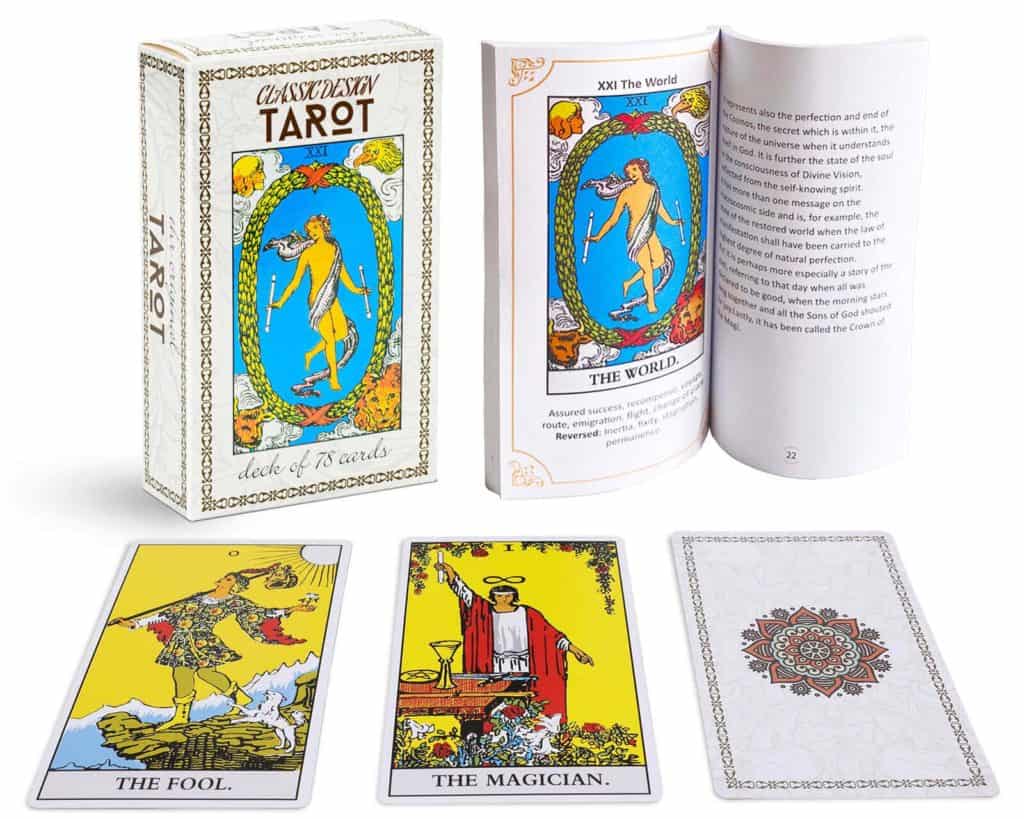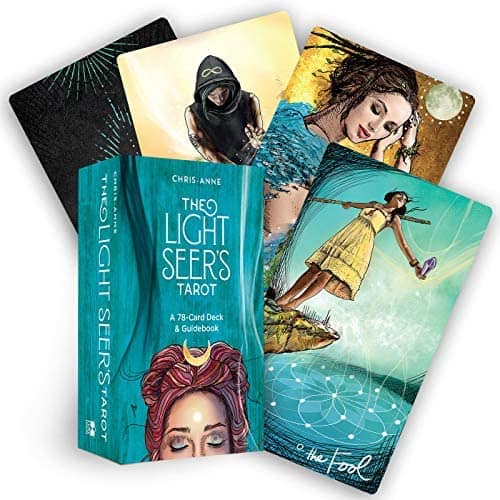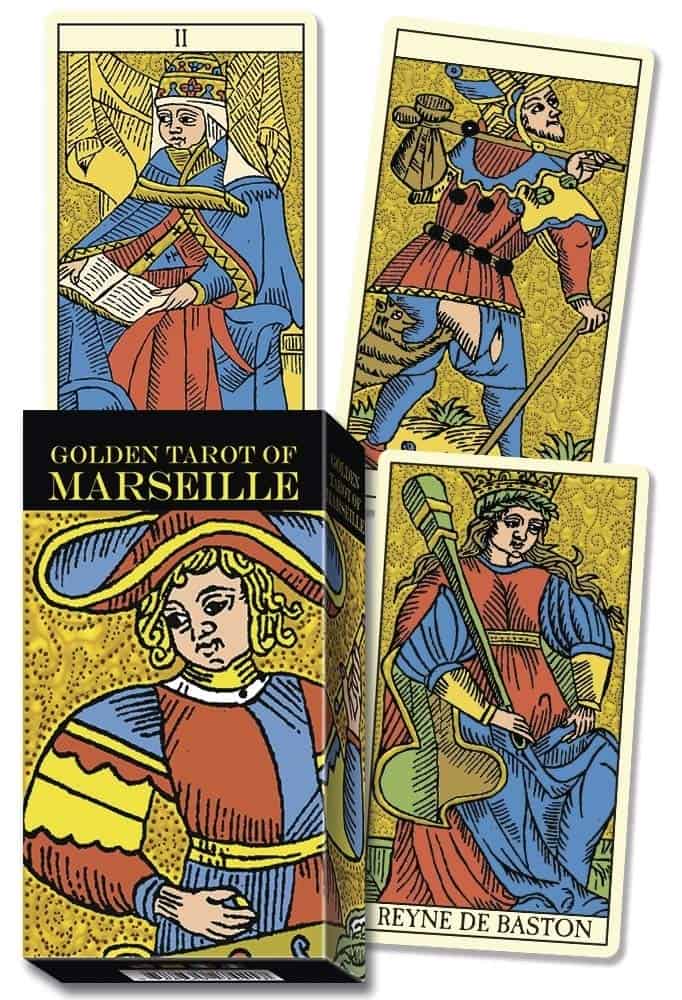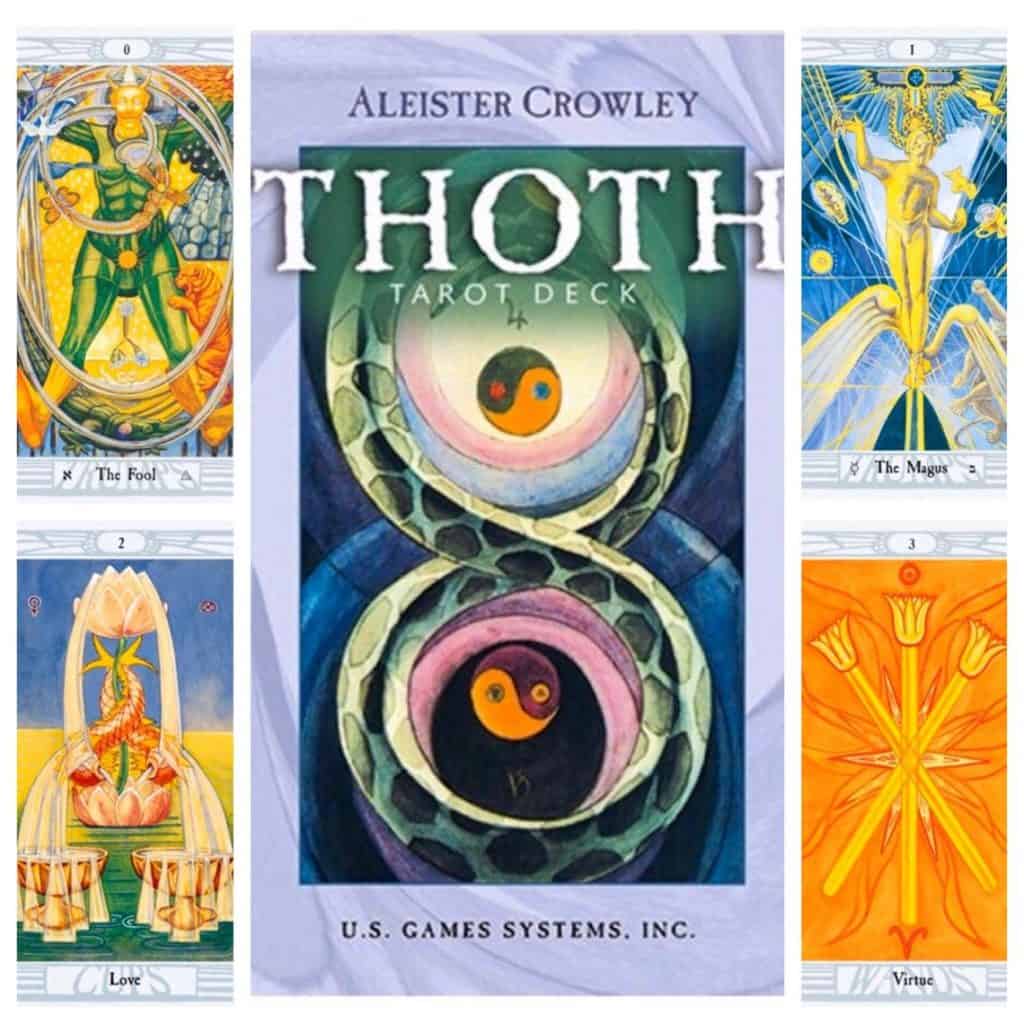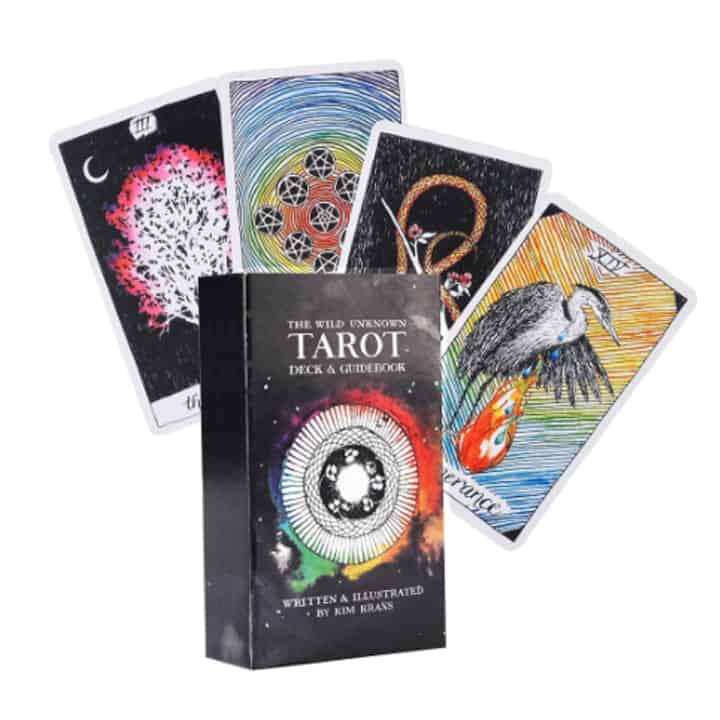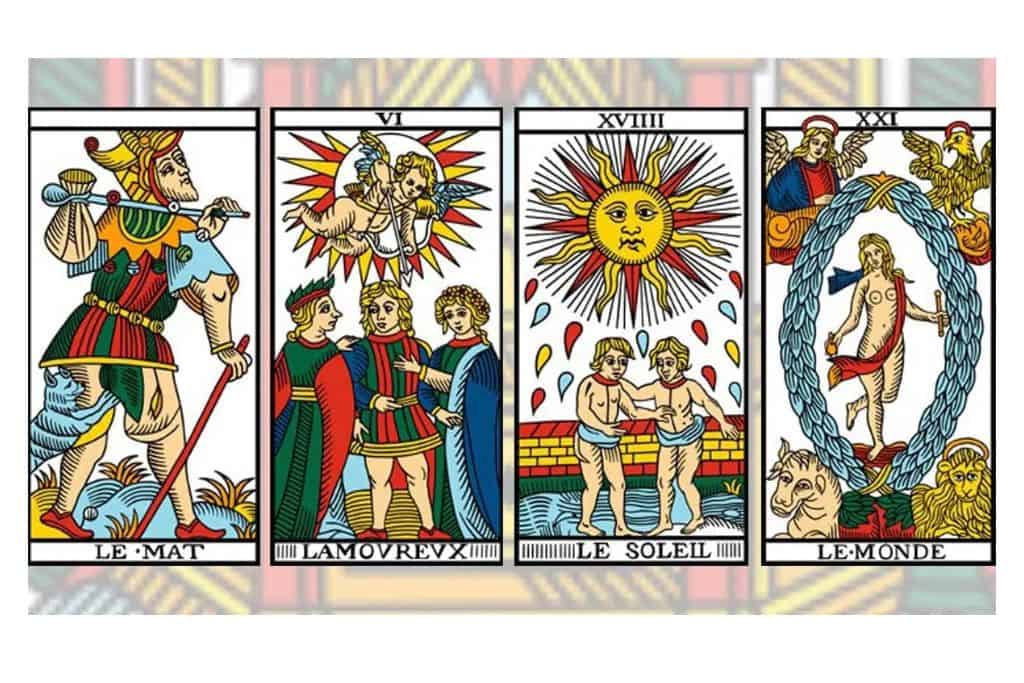
Will he come back to me? When will I meet The One? Is he cheating on me?
These are common questions I’ve received as a tarot reader on a psychic hotline. While a tarot reading can answer these questions, the cards tell a bigger story. One that some people don’t like to hear.
That story begins and ends with you.
What Are Tarot Cards: A System of Divination and Self Reflection
These beautiful little picture cards are a complex, dynamic, and living compendium of human wisdom. Crafted using careful symbolism informed by the time period, context, and artist creating them, the tarot cards are a functional system of ideograms that speak to the complexity and multidimensionality of human consciousness.
The Power of Tarot
This system of cards carry within them ancient symbolism and the collective unconscious of thousands of years of human history. What are tarot cards but a window to the soul: of your soul, your friend’s, your lover’s, your family’s, the whole of humanity and its relationship to the cosmos.
To someone first starting it can be hard to see the power these cards contain. The pictures seem obscure, and messages don’t come right away. However, this is an element of the tarot which makes it so unique: traditions and practices which were once persecuted live on in these cards. Through them you can become an initiate of the spiritual path.
In order to become initiated, you must make a commitment to yourself to embark on a journey of self-inquiry. Face the darkness, the things you don’t like about yourself, and you will find that you are more powerful than you think. Tarot cards help you to discover and confront these aspects of yourself: they are a tool for harnessing the inner, microcosmic machinations of the universe.
This is the key to unlocking the power of the tarot. Through your own self-empowerment, you will unlock the psychic within.
But, before you become initiated, you have to study. Just like an apprentice starts with books, so too must you learn what are tarot cards composed of, and how their system works.
The Tarot System
Major Arcana
The Major Arcana consists of cards that relate to Big Themes. Things like major life lessons, karmic influences, life-altering events, self-mastery, archetypal concepts, teachers, and other dominant, overarching, and omnipresent traits, emotions, messages, and guidance.
If you lay them out in numerical order (starting with 0), they also represent the Hero’s Journey of the main character – The Fool. The Major Arcana cards are also intimately connected with the Hermetic Qabalah’s Tree of Life.
Minor Arcana
The Minor Arcana are divided into 4 suits (much like a playing card deck). These are most commonly:
- Wands (these can also be Staves or Rods)
- Cups (these can be Chalices)
- Swords
- Pentacles (these can also be Coins)
Each suits contains:
- Cards valued from Ace to 10
- Four Court Cards
- Pages
- Knights
- Queens
- Kings
Minor Arcana cards 2 to 10 correspond to day-to-day things like specific emotional states, snap shots of moments in time, situational topics. Oftentimes, they are the cards most commonly associated with each of the essential elements (Fire, Water, Air, Earth).
Aces in the Minor Arcana represent the cosmic potential energy of each suit. They are the rawest, most purest form of the essential element related to that suit.
Court Cards
Court Cards are people in varying stages of their maturity. These cards represent key hierarchal archetypes of royalty.
Pages are the silly, doe-eyed, carefree youngster-in-training preparing for their test to knighthood. Typically, they are playful, naive, and represent starting something new.
Knights have surpassed a critical trial to attain their status, and live in service to their higher purpose. They are valiant and driven, work tirelessly, and embark on many adventures.
Queens are women in their perfect power: they represent regal authority, feminine strength, wisdom, and higher learning. Similar to knights, they have achieved their status through great trial and tribulation – they have earned their position.
Kings are masters of their domain. Accordingly, they bear the burden of creating structure, maintaining the health of their constituents, and ensuring the protection of order. Kings are the perfect masculine – assertive, yet sympathetic. In control, but bendable.
How to Buy Tarot Cards
As a beginner, it’s good to start with OG decks like The Rider-Waite Smith, or the Tarot de Marseilles. The reason being that these use very simple imagery, primary colors, and strong human figures. Decks like the Rider-Waite Smith also contain astrological correspondences which add significant depth and dimension.
However, another component to finding the right deck is your resonance with it. Does it contain cultural symbolism that you enjoy, or find meaningful? Does the art style evoke an emotion (anger, sadness, joy)? These are important considerations to make.
Below I listed some of my favorite decks.
Click on the image if you want to buy it for yourself!
Classic Rider-Waite Smith
This is a deck I personally own. The card stock is great, the colors are vibrant, and the guidebook is a great starting point.
It’s one of my favorites, and I take it with me EVERYWHERE. It’s the size of a regular playing card deck, and is easy to shuffle.
The Lightseer’s Tarot
If you prefer imagery that is more modern with a spiritual twist, this one’s for you. I LOVE the sacred geometry present in the cards. It also follows the same astrological correspondences as the RWS.
My favorite part about this deck is the art style. There’s always something new to look at with every reading. This is another beloved deck in my collection.
Tarot de Marseilles
This is an 18th century deck, considered the progenitor of tarot as we know it today. Although these started as a playing card game, the Renaissance imagery is rich with symbols and important cultural context from that time.
This is a great deck to start with if you enjoy art history. It’s a genuine classic, and a must have.
The Thoth Tarot
If you prefer abstract, darker imagery, then this deck could be for you. Created by Aleister Crowley, this is the left-hand path version of the Golden Dawn tarot.
The cards are jam packed with symbolism, some quite evocative. It’s a great deck for the occult-maven inside of you. The booklet also contains an insightful 15-card spread.
The Wild Unknown Tarot
This deck uses a system entirely created by the artist. It contains beautiful, mystical, and sometimes spooky renditions of animals and geometry.
This is a great deck for a person who doesn’t resonate with more traditional imagery. Be aware that you’ll have to learn the correspondences in the guidebook and use your intuition more often than not to understand these cards.
The Celtic Tarot
This is the first deck that I’ve ever owned, and let me tell you… it kicks my ass every time I read from it. Each card is coded to Celtic culture. You’ll learn about mythology, the different societies that existed at the time, and get acquainted with Gods and Goddesses.
This is a remarkably well researched deck, and its messages are straightforward with no holds barred.
What are Tarot Cards Used For?
The original use of tarot cards was as a playing card game called Tarocchini in the mid-15th century. Some sources say the tarot goes as far back as ancient Egypt, with etymology of the word “tarot” linked to the Egyptian word “Taruth”, which means “the One who is consulted”.
Ancient esoteric origins of the tarot are largely disputed. Despite that, the cards contain a wealth of occult symbolism and theologies.
It wasn’t until 1783 that Jean-Baptiste Alliette first illuminated the cards as a source for esoteric and occult wisdom. He later influenced the work of cartomancer Marie Anne Lenormand who inspired the development of oracle cards.
Jean-Baptiste Alliette published his seminal work between 1783-1785 called “Manière de se Récréer Avec le Jeu de Cartes Nommées Tarots” (Way to Recreate Yourself with the Deck of Cards called Tarots) thus paving the way for tarot cards as a form of divination, arcane wisdom, fortune-telling, and self-inquiry that we know of today.
Tarot Card Meanings
Deriving an understanding of the cards comes from synthesizing your intuition with the knowledge and context of key symbolism found in the cards. While it is helpful to read the guidebooks, your true connection with the cards can only be forged through intimately getting to know them.
Key Symbolism
As you begin your journey through learning about tarot, it is important to learn about correspondences. These are symbols integrated into each picture on the card which help you to derive an overall feeling for, or meaning of the card.
This is a long-term study. The more you learn, the more depth you’ll develop, and the better you will pick up on patterns. But, you have to start somewhere. I recommend picking one and sticking to it. Dive into that rabbit hole and imbibe as much as you can about that topic.
Colors
Color correspondences are pretty consistent across sources. Generally, the colors in tarot cards give you an overall theme. Think of them as a filter for a selfie. Or a set of glasses that give you different levels of magnification.
Figures
The people on the cards have significance, too. The direction that they face (away from you, towards, you towards the other figures in the card), what they are holding, their facial expression, how they stand, what they are doing, and what is happening to them all deliver a message.
Typically, figures in the cards represent the human element: thoughts, emotions, passions, and actions.
Numbers
All of the cards are numbered. Major Arcana are number 0 – XXI, and Minor Arcana are numbered Ace – 10. In numerology, each number holds a special significance.
Oftentimes when we read, we may pull a specific pattern of numbers. Maybe you pull 3s all the time. Or, you pull multiples of 9. Whatever the pattern, it adds a layer to the overall theme of the card.
Objects
Objects such as globes, bags, clothes, thrones, buildings, nature, platforms, boats, and many others all contain their own rich history. These are carefully placed symbols which build the story inside each individual card.
Pay close attention to which objects appear, and see if they appear often.
Astrological correspondences
If you are using the Rider-Waite Smith, Thoth, or Golden Dawn decks, there is a meticulous system of astrology integrated into the deck.
Each Major Arcana is assigned a zodiac sign or planet, each Minor Arcana is assigned a planet and a zodiac sign, and the Court Cards are each assigned 3 decans.
You can use this system with essential dignities and aspects to derive meanings and discover relationships between cards.
Elements
Each suit of the Minor Arcana is assigned an element, and if you are using the Rider-Waite Smith, Thoth, or Golden Dawn decks, astrological correspondences also involve the elements.
These are the most essential building blocks of life and they represent the independent modalities of human existence: our thinking mind (Air), our passion (Fire), our feeling and empathy (Water), and our physical, material desires (Earth).
Meanings of Various Cards
The best way to learn how to understand the meaning of a card is to break it into its different pieces. Read about The World card below. I start with a global description of what the card represents and how it fits in the Major Arcana. Then, I break down the symbolism.
How do the different pieces come together to create the whole? What other impressions does The World invoke within you?
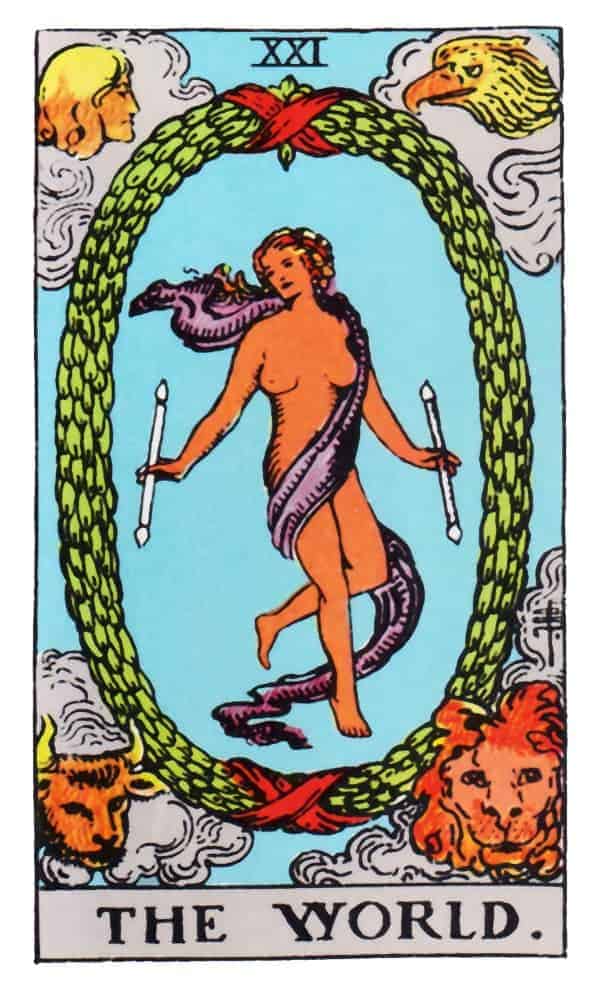
Where it fits
The World card is the very last card of the Major Arcana. It represents the completion of The Fool’s journey from the great cosmic soup into the Earthly, physical plane of abundance (also known as the Kingdom of God) and spiritual enlightenment.
It represents the completion of the soul’s journey into its densest form, while simultaneously initiating the soul’s ascension back into the spiritual plan. The elemental and planetary correspondences for this card are Earth and Saturn
Overall meaning/upright
Liberation from suffering, taking control over your destiny, completing a project, reaching spiritual maturity, returning to cosmic consciousness, releasing yourself from self-imposed limitations, resolution of mental conflicts
Reversed
Difficulty with subconscious triggers, meaninglessness, lack of willpower, a crisis of faith, disconnection from self, procrastination, projection of internal conflicts onto others
Description of Symbols
Wreath around the dancing figure
Although it is the last card in the Major Arcana, it also represents a beginning: the nature of the universe is cyclical.
Shaped as a yoni, the wreath around the woman also corresponds to the sacred geometry pattern Vesica Piscis which is the interface between the astral and the material planes
White rods
What comes up must come down, and vice versa. The rods in the World are the same wand that The Magician uses to call upon universal forces to manifest his desires on Earth.
Now that the Soul has ventured through all spiritual and Earthly modalities of existence, it is ready to return to the cosmic God soup from which it came
The heads in each corner of the card
These represent the different fixed signs of the zodiac and their corresponding Major Arcana card: human – Aquarius (The Star), Eagle – Scorpio (Death), Bull – Taurus (The Hierophant), and Lion – Leo (Strength).
They allude to the Soul’s completion of critical steps on the path to enlightenment
Scarf around the figure
It wraps around the lower chakras, representing shakti, or kundalini energy. Shakti is the fundamental creative force of the universe, which is what gives life to all physical matter. This also corresponds with the Saturn creative force of Binah, the third sephirot in the Tree of Life
Woman in the center (as opposed to a man)
A woman’s womb is a portal from the cosmos onto Earth for the Soul. She sits at the Vesica Piscis entrance, the doorway from Earth to the Cosmos. She represents the maxim “As Above/So Below.”
Tarot Card Readings
Whether you’re reading for yourself or another person, there are several things to keep in mind. The first is maintaining a clear head space. Before you start reading, make sure there aren’t any lingering thoughts or feelings other than what you want an answer to.
Having a clear intention for the cards will help you to interpret them. This is where having an in-depth understanding of symbolism goes a long way in understanding the messages you receive.
The second thing to keep in mind is what is happening around you. Your intuition is aware of bodily and extra-sensory stimulus. After all, your body is always in the present.
This includes everything you hear, touch, smell, feel in different parts of your body, unadulterated first impressions, and your empathy.
What happens when you combine the two? When you look at a symbol, what do you feel in your body? What are the first thoughts that come to mind? This is what it means to synthesize your intuition with scholarship.
FAQ: Tarot Cards
I want to clear up some misconceptions around the cards in addition to answering common questions.
How Do You Shuffle Tarot Cards?
You can shuffle them any way you like. Some cards are huge, so you might need to get creative. So long as you randomize the cards, it doesn’t really matter what method of shuffling you use.
Are Tarot Cards Evil?
I can’t believe people ask this question! The cards are very simply pieces of cardboard with pretty pictures on it.
The more complex answer lies in a long history of dogmatic religions discouraging people from accessing the divine by gatekeeping wisdom and building reliance on authority for answers.
To summarize, no, the tarot cards are not evil. They only convey information that we already know.
Are Tarot Cards the Same As Oracle Cards?
No. Oracle cards do not follow the same system as the tarot cards do. Additionally, they are bespoke pieces of art that convey more specific messages related to the theme the artist creates them with. Learn more about the difference in this post.
Final Thoughts: What Are Tarot Cards
In sum, tarot cards are a complex system of art which convey cultural, esoteric, and mystical wisdoms through a variety of symbols and correspondences.
They are used first and foremost as a tool for self-inquiry, and can be a method by which one is initiated onto the spiritual path.

